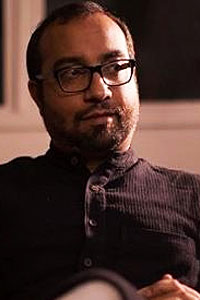India's parliamentary elections are like no others in the world. Nine hundred million people are eligible to vote in 2019, for 573 constituencies -- the largest of which contains almost three million voters. The country will take 39 days to vote; some states, like giant Uttar Pradesh with a population of 200 million, will vote in seven stages. And, on May 23, we will get to know who won.
That's assuming there's a clear victor. The last elections, in 2014, threw up a result that had been unthinkable for three decades: a clear majority for one party, Prime Minister Narendra Modi's Bharatiya Janata Party (BJP). While repeating that mandate isn't impossible, it will be extremely difficult. The BJP doesn't have much of a presence outside the north and west of India and, for its majority in 2014, it had to win almost all the seats in which it was competitive. In the end, Modi himself only won a little more than 30% of the vote.
For the BJP, 2014 was something of a perfect storm. The incumbent Congress-led government was extraordinarily unpopular, buffeted by corruption scandals and anger over high inflation. Mr Modi himself was a breath of fresh air for many voters: articulate, especially when compared to the Congress leaders, and with no major corruption allegations to his name. His campaign was streets ahead of his opponents' as well. It pioneered electioneering methods that have since become increasingly common in the world's other democracies, exploiting everything from Twitter to free news coverage to targeted trolling to questionable claims on social media.
This time around, Mr Modi faces a more difficult task. Memories of the Congress years have faded. And his own performance as prime minister has been, at best, underwhelming. Government officials may claim that India is growing faster now than it ever has, but few people believe that. What everyone knows is that jobs are hard to come by and that farmers in particular are suffering.
That said, Mr Modi unquestionably remains far more popular than any would-be rivals. He has never stopped campaigning. In 2014, he was an exciting novelty; in 2019 he is an institution. His face is everywhere, on walls and in newspapers, above reminders of one government welfare programme or another. He has a radio show, his government can count on support from tame television channels and, of course, he still has Twitter.
The question that nobody can yet answer is if this election will be, like 2014, a quasi-presidential one -- in which Mr Modi's promises and popularity are the single most important factor -- or a regular parliamentary one, such as 2009 or 2004, where more local issues predominate.
If it's the latter, the BJP will be on the defensive. As was evident in its loss of three crucial states in its heartland at the end of last year, voters aren't pleased with the state of the economy or with the BJP's administrative skills. A "grand alliance" of the opposition might in that case oust Mr Modi. We would be back to the coalition era -- in which the national parties, the BJP and the Congress, would have to wheedle, bribe and threaten various smaller parties till a working majority could be cobbled together.
An election as complex as India's is fiendishly difficult to predict. India is the most diverse country in the world, and each state has its own hot-button issues; many of them have their own regional leaders and political parties. Voters will examine not just who might become prime minister but what the local dynamics are, as well as the caste and connections of whoever might represent them in parliament. Some areas have multiple equally strong parties, and a tiny swing from one to the other might translate into big advantage in terms of parliamentary seats. Pollsters might get the overall numbers right -- the number of voters who prefer the BJP to the Congress, say, But, translating that into a final tally of seats for the competing alliances is almost impossible.
History bears out this unpredictability. Few outside Mr Modi's own circle believed that he would win a majority in 2014. In 1999, the BJP won fewer seats -- after a border skirmish with Pakistan -- than predicted. In 2004, the BJP government was unexpectedly voted out. And, in 2009, the Congress increase in seat strength startled pretty much every observer.
Only the stock markets seem to have decided the 2019 result already. They've shot up in recent days after a couple of favourable polls for Mr Modi's party, and on the assumption that a recent confrontation with Pakistan has strengthened his tough-guy image. Perhaps they need to look again at history. Nobody ever knows quite what the Indian electorate will produce on counting day. - Bloomberg Opinion
Mihir Sharma is a Bloomberg Opinion columnist.
